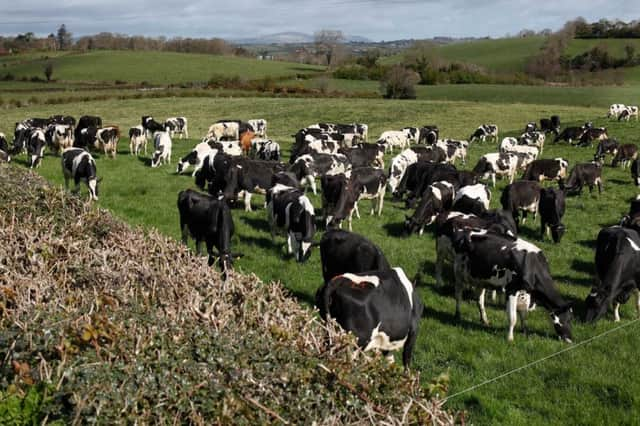Milk and feed prices not the only criteria!


While most people associate volatility with milk price and feed price fluctuations, which have become more marked as we move into a more global marketplace, it is important to consider that other factors can cause swings in performance and profitability too.
Fertility can be a good place to start as pregnancies drive profits, improving milk sales and calf income while potentially helping reduce costs. According to Huw Loyd, Genus ABS, many farmers would be well advised to start by considering how they monitor fertility, and whether the measures used allow them to achieve high level performance.
Advertisement
Hide AdAdvertisement
Hide AdHuw is concerned that many farmers are still relying on calving interval as the main measure of reproductive performance, suggesting it is a flawed measure to try and track progress with such an important aspect of the business.
He said: “Calving interval has a number of pitfalls that make it an inappropriate measure of performance. Firstly it is very historic and looks at performance over the past year rather than performance now. How does an extending calving interval help you identify risk factors and take action when the problems will be many months old?
“It can be a biased measure, being influenced by management decisions, such as high culling rates. Calving interval also excludes first lactation animals which often form a significant proportion of a herd and also excludes the worst fertility performers, the cows remaining ‘open’. You are only measuring the fertility of those cows that get back in calf as opposed to looking at the whole herd picture.
“Furthermore, predicted calving interval only includes cows that are confirmed in calf. As such it tends to give an overly optimistic view of performance.
Advertisement
Hide AdAdvertisement
Hide Ad“If you want to improve performance you need to use measures that are timely and active, giving a current position and allowing action to be taken as required. Encouragingly an increasing number of farmers state they are moving to using 21 day pregnancy rate to track and manage fertility. The 21 day pregnancy rate gives a true picture of fertility of eligible animals and encourages prompt management action as required.”
Genus ABS technicians can offer technical advice regarding short term measures to improve fertility in addition to longer term measures such as sire selection for this feature. They will summarise the data and provide a detailed plan for each individual herd. Performance is monitored using 21 day pregnancy rate which is calculated as the number of cows pregnant out of the number of cow days eligible to become pregnant in a 21 day period. In so doing it reflects changes in both heat detection and submission rates. Being time specific it allows proactive decision making to address any fall in performance.
For larger herds RMS has proven invaluable regarding fertility performance. This involves a highly trained technician walking the cows every day, chalking them and inseminating them at the optimum time. Farmers can be sceptical about this service but Huw Loyd points out that “the proof of the pudding is in the eating”.
He stated: “Take the herds recently new to RMS across the UK, which have a total of 6778 cows. In the six months before starting on RMS the herds were averaging a 13% pregnancy rate but following use of the service for 6 months they increased this to 19%, creating nearly twice as many pregnancies in the process.
Advertisement
Hide AdAdvertisement
Hide Ad“Currently over 200,000 breeding animals are enrolled on RMS in the UK and the average 21 day pregnancy rate is 19% which is 5% above the estimated national average. These herds on average have 51% of cows pregnant by 100 days, which is an excellent figure.”
Huw went on to outline the advantages of improved fertility performance:
Increased milk sales per cow/year – getting cows in calf more quickly means there is a higher proportion of fresh calved cows in the herd and fewer stale milkers. This has the effect of increasing annual milk production and consequently income.
Better feed efficiency – cows in early lactation use feed more efficiently leading to more cost-effective milk production.
Increased calf crop – more calvings means more calves.
Advertisement
Hide AdAdvertisement
Hide AdMore planned culls – with more cows getting in calf, fewer will be sold barren. This means more cows can be selected for culling for management reasons such as production, with less being culled merely because they fail to get in calf.
Achieving and maintaining high levels of fertility can have a significant impact in reducing the consequences of volatility by ensuring a constant supply of fresh calved cows and more calvings per year. And evidence shows that by taking a planned approach to getting cows back in calf, it is possible to improve high levels of reproductive performance.